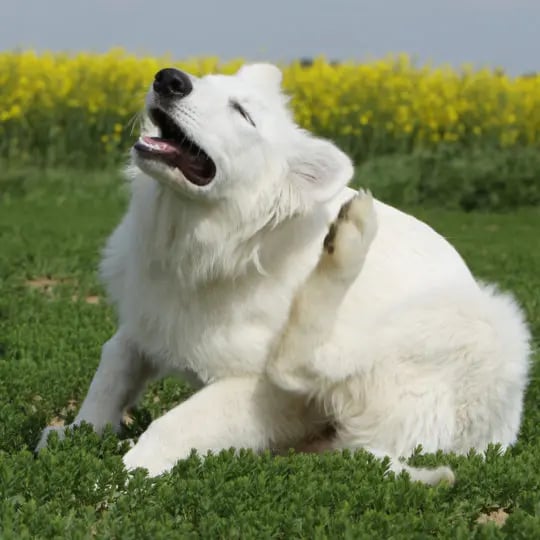Get Rid of Fleas in Your Yard

Getting rid of fleas for good is a challenging task at best, but it can be done if you know the right way to do it. The first place to start is with your pet, but after that you need to look to the yard where your pet spends a good deal of time. You can de-flea Fido, but if your yard is infested, these parasites will jump at the opportunity to feed on Fido once more. And once your yard is free of the pests, it is easier to prevent future infestations.
Finding Fleas
Fleas are tiny, wingless parasites that feed on the blood of other animals to survive. Because of their diminutive size, they can often go unnoticed for a while.
To begin your ambush on the backyard, you’ll need to determine exactly where the fleas are hiding. That’s when the white-sock test comes in handy: Put on a pair of high white socks and walk around the yard, making sure to hit all the hot spots where your pet hangs out. After you wade through each area, check out your socks. If you indeed have fleas in your yard, those tiny parasites should show up nicely on the white material.
Backyard Battle of the Bugs
Now that Fido is flea free and you’ve determined what areas in your yard need to be treated for fleas, it is time to prepare for the battle of the bugs. Put the pets and kids inside and get to work.
Start by ridding your yard of rubbish. (Let’s face it, you’ve been wanting to do that anyway.) Leaf piles, broken plant pots, and old outdoor furniture are all places where fleas can hide and lay eggs.
Next, mow the lawn and do some weeding. A neat yard is not an ideal home for fleas. Frequent maintenance like mowing, pruning, and weeding lets your lawn get more sunlight and fleas like moist, shady environments.
Drown your sorrows. Flooding your yard will wash away your flea problems. It drowns (and washes away) the flea larvae and eggs, so the whole life cycle can’t repeat itself. Plus, it also rids your yard of adult flea feces, which is a source of food for the larvae. A good rain can also take care of this, but if the weather is dry and sunny, you won’t want to wait.
Giving Fleas the Treatment
- If you decide to use a pesticide spray to eliminate the fleas in your yard, try to select the least toxic one. Be sure to follow the instructions and wear protective clothing. You’ll want to keep kids and pets away from the treated areas for a while afterwards. Keep in mind that some pesticide products require repeated applications in order to be effective, so read the label carefully. Fortunately, you can usually just focus on the areas that failed the white-sock test.
- Use nematodes, naturally. If you are looking for a chemical-free approach, nematodes may be your solution. Harmless to people, pets, and plants, these tiny beneficial worms come in a spray form, and once applied will feed on larvae (flea and other insects as well). This approach is best for shady areas as nematodes won’t survive in the direct sunlight.
- Another natural approach is to use cedar wood chips. Believe it or not, fleas have an aversion to the smell. Try using cedar wood chips in your mulch or garden areas, or create a border with them around the yard and the fleas will gladly go elsewhere.
Because ridding your yard of fleas is a difficult and time-consuming process, it may be best to call in a trained specialist. If you have a flea or pest problem, or wish to prevent one, call Green Pest Solutions at 855-312-7157 and let us fight the battle of the bugs in your yard.